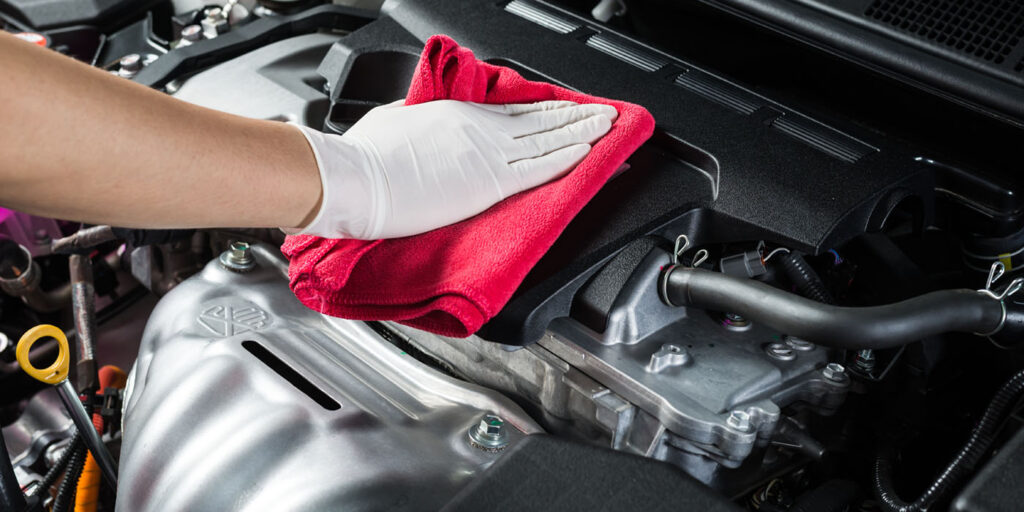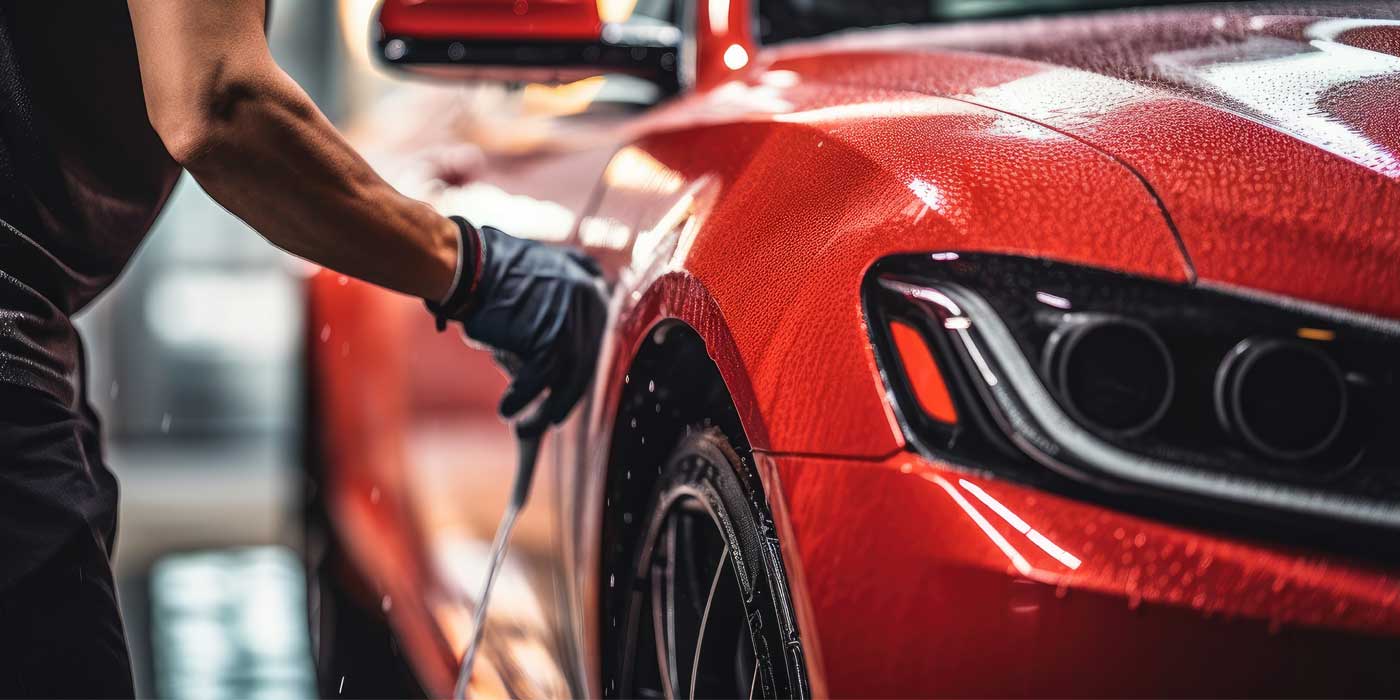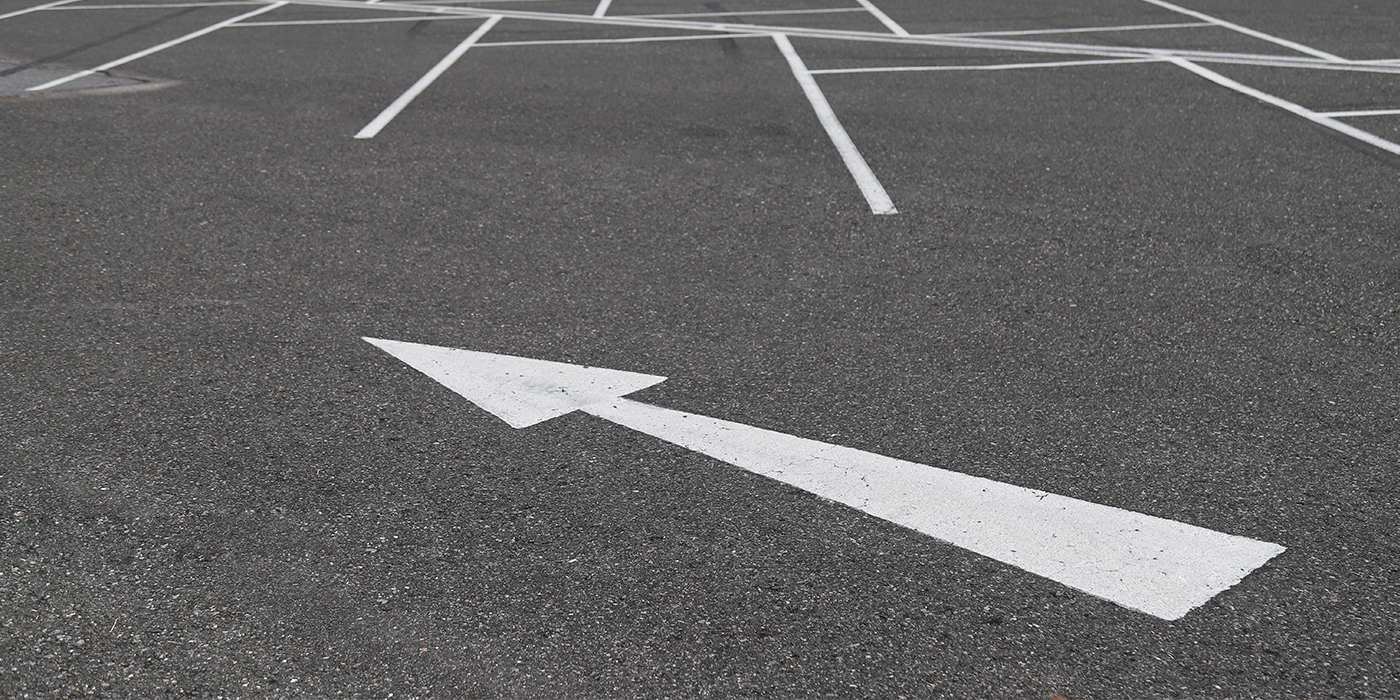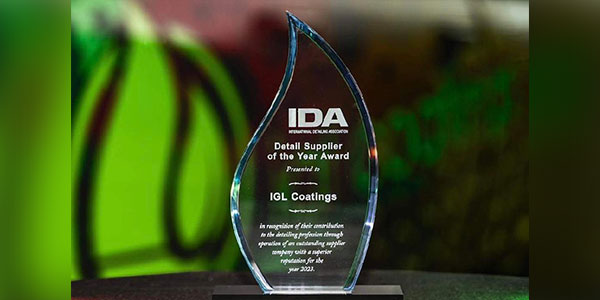A well-kept car looks amazing when rolling down the street, and it drives better. But, more driving means exposing a car to pebbles, grime, greasy and oily residues, dirt and particles. This unwanted debris can also accumulate under a car’s hood.
For a car owner to enjoy the beauty of a clean car, it’s vital to address the cleanliness of the interior, exterior and under the hood — the engine.
The engine is the heart of the car. Keeping it clean means giving a car the power to perform smoothly.
Why clean a car engine?
Typically, people who live in urban areas with paved roads and experience little or no debris should clean their engines twice a year.
However, those who live in the country or do a lot of off-road driving — where they encounter a lot of dust, grime and debris — should clean their engines every three months. The same applies to those who live in areas that experience extensive snowfall and rain.
Related: How to change an air filter
Cleaning a car’s engine has numerous benefits, but it’s vital to do it safely to avoid making mistakes that can cause malfunctions.
For example, engine sensors and wires should not be exposed to water. They can cause short circuits, leading to a faulty engine which can be very expensive to repair.
Benefits of cleaning a car engine
- It prevents combustive materials, such as oil or leaves, from building up and becoming a fire hazard.
- It removes debris and road salt, thus reducing corrosion.
- It makes it easier to spot any potential danger, such as leaking fluids and cracks, before they become problematic. This means having a clean engine can make a car safer and protect the driver from breakdowns and accidents.
- A clean engine improves a car’s look, thus increasing its resale value.
- A layer of grime in the engine makes it work harder, thus using excessive fuel. But a clean car engine improves a car’s fuel economy and performance, thus saving money.
How to clean a car engine
1. Schedule.
Ideally, opt for a warm day. Warmer weather, which is low in humidity, will help the car engine to dry faster.
2. Prepare the cleaning supplies.
To effectively clean a car’s engine, you will need some equipment and products, including;
- A non-metallic scrub brush
- Simple, all-purpose cleaner
- Air compressor or a clean towel
- Tape and a plastic bag
- Water sources, preferably a pressure washer
- Safety glasses and gloves
- Biodegradable engine degreaser
- Wrench for removing the battery cables.
3. Allow the car to cool off.
If the car was running, switch it off and flip open the hood to allow the hot engine to cool off for a few hours before cleaning it. In fact, it’s advisable to clean the engine in the morning since the car would have cooled down overnight.
Pouring cold water on a hot engine can warp and crack it, leading to expensive repairs. Additionally, a hot engine instantly dries off the cleaner, leaving the engine with unwanted spots.
4. Tighten the dipstick and caps.
Tightly seal the brake fluid, power steering fluid, coolant and other liquid reservoir caps. Please press down the dipstick to ensure it is adequately sealed.
Doing this prevents the water from getting into the fluids, thus preventing chemical reactions and degradation, that can damage the engine.
5. Disconnect the battery.
First, disconnect both battery terminals and, if possible, remove the whole battery to enable you to clean that area comfortably. Disconnecting the terminals ensures you protect them from getting wet and damaged.
6. Cover up.
Cover up the sensitive electrical components using a plastic bag and seal them tightly with electrical tape. Protect features like engine control units, ignition wires, distributor caps, spark plugs, coil packs, alternators and other filters.
Protecting these compartments from getting wet will ensure you thoroughly clean the engine without the fear of damaging anything.
7. Degrease.
Agitate the surface grime and dust using a brush with synthetic bristles, and vacuum it up. After scrubbing off the dirt, wet the engine bay using warm water to help in removing loose grime and dirt. Then, spray the degreaser throughout the engine compartments, and allow it to soak for 10 minutes.
Pay special attention, and add more grease remover to the caps, hoses, fluid containers and firewall, which always have extra grime buildup.
8. Rinse.
Rinse out the engine bay using a weak stream of pressure sprayer. Avoid using a high-pressure sprayer, since it may leak water onto the covered areas, causing problems. Start rinsing from the back, going to the front.
9. Finish up.
After rinsing it, wait for the water to evaporate, and then wipe the engine using a soft microfiber cloth. Alternatively, you can use a compressor to blast in the air to the nooks and crannies, thus removing excess water.
Remember wiping the engine removes not only water but also the remaining grime.
10. Remove the coverings, and reconnect the battery.
After wicking up the water, remove the plastic and electrical tape from the covered areas. Dispose of them correctly. Leave the engine with the hood up for about an hour or until everything completely dries out.
Reinstall the battery terminals and reconnect the battery.
11. Start the car.
Once the engine is completely dry, start the car and allow it to run the usual way until it reaches its operating temperature; you can drive it or switch it off.
Things to avoid when cleaning a car engine
Don’t be too quick to take the car’s components out; you might misplace them or put them back improperly. It’s advisable to take a picture of any part you want to remove.
Don’t go crazy with the cleaning chemicals. Some engine cleaners can leave residue on an engine, leading to corrosion.
Conclusion
Make it a habit to advertise the need to clean a car’s engine regularly using the above steps. That way, it becomes easy to keep the engine looking good and also be able to identify and resolve any emerging engine problems while ensuring safety.
Darren Tobin is a personal injury lawyer at his firm, Tobin Injury Law. He and his team help injured victims as well as surviving family members who have lost a family member to wrongful death recover from their losses.














